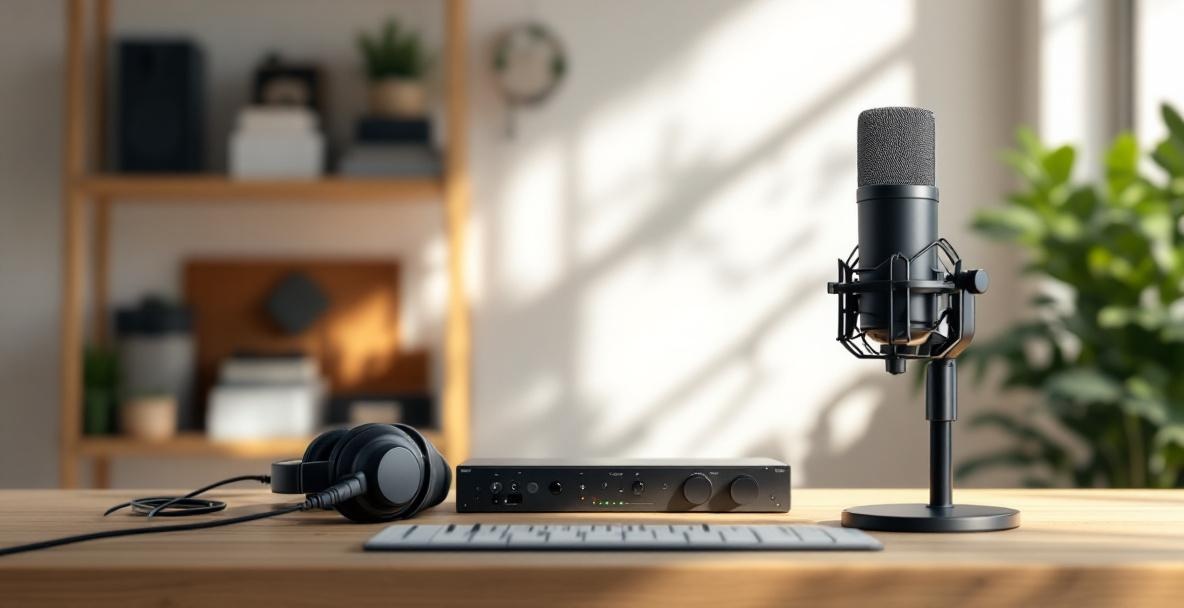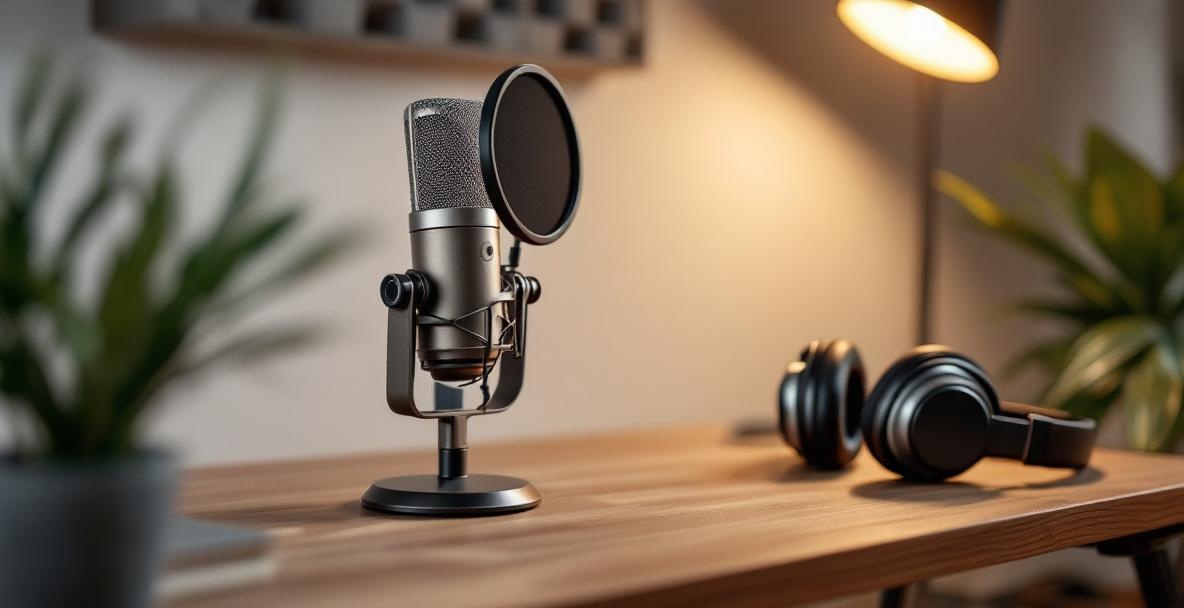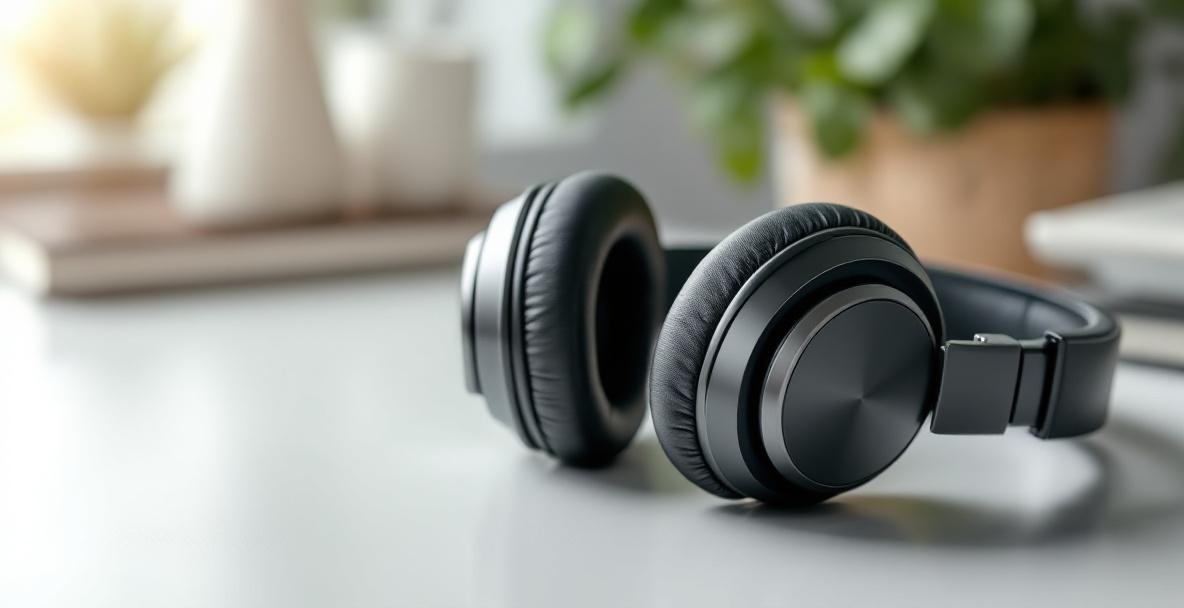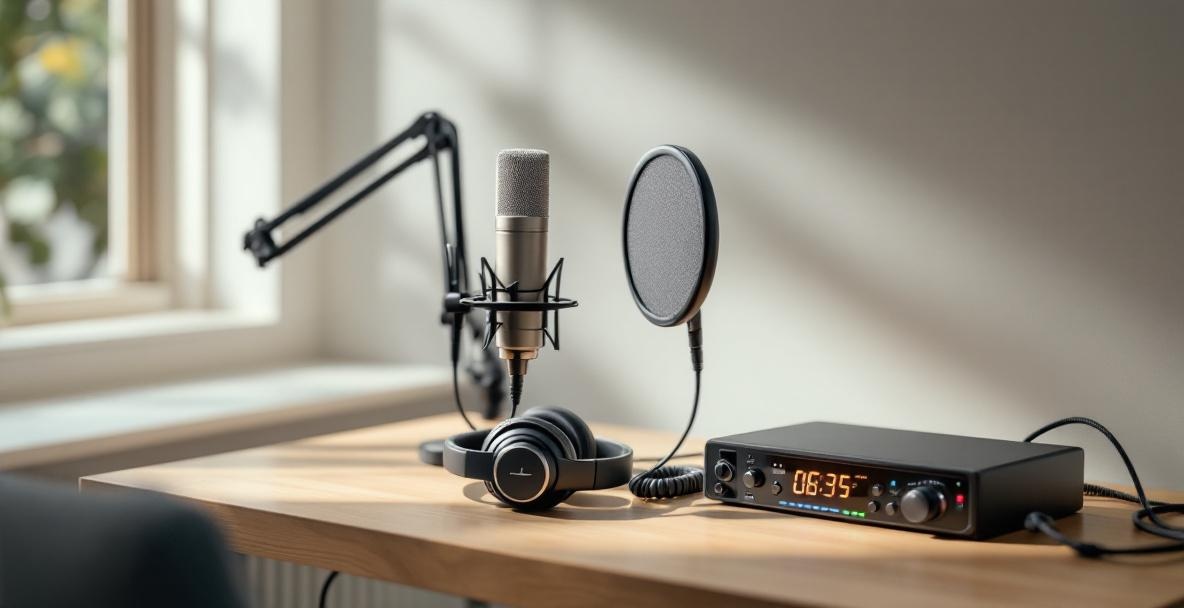Creating a podcast that sounds incredibly professional starts with having the right tools. It does not matter if you record in a cozy bedroom closet or a full-blown studio; the gear you choose is what brings you that crystal-clear audio your listeners crave. At Castee, we know that the best equipment is all about matching your unique needs rather than just picking the costliest option.
Kickoff: Hunting for Your Ideal Podcast Setup

Why Your Gear Is Key
A solid audio quality can make or break your show. Even if your content is fascinating, it loses its punch when listeners struggle with muffled sound or distracting background noise. Your equipment lays the groundwork for your podcast’s sound, affecting everything from keeping your audience hooked to opening doors to new professional chances. When you invest in the right tools, you show your commitment to quality. The best part is you can boost your sound without emptying your wallet if you choose smart, cost-effective solutions.
Is This Guide Right for You?
If you are just starting out or have been podcasting for a while and want to up your game, this guide is made for you. Newcomers will find budget-friendly gear that offers solid performance without a heavy investment, while experienced podcasters can discover pro-level tools to take their production to the next step. Whether you are recording your first episode or your hundredth, you will get real advice based on your experience, studio setup, and podcast style.
Microphones: Let Your Voice Shine

Choosing Your Mic: Dynamic or Condenser?
It all begins with choosing the right microphone for your space and voice. Dynamic mics work great in less-than-perfect rooms because they block out background noise while handling loud sounds without distorting. They are tough, easy on the budget, and perfect for a simple home studio or on-the-go recordings. On the other hand, condenser mics capture every nuance in your voice, producing a crisp and vivid sound. Their extra sensitivity, however, means they pick up more room noise and need proper power and treatment to shine. Your decision should depend on your recording environment and voice character. For deeper or brighter voices, match the mic to your needs and conditions.
Best Starter Mics
If you are just dipping your toes into podcasting, there are a few mics that deliver great sound without costing a fortune. The Audio-Technica ATR2100x-USB is a popular choice because it works via USB and XLR, letting you start recording directly on your computer then upgrade later. It cuts out unwanted background noise and gives a warm, clean voice for about $99. The Samson Q2U is another great option that offers similar dual connectivity at a very friendly price of around $60-$70. Its sound quality competes with mics that cost much more. For those ready to invest a bit further, the Rode PodMic at $99 delivers that sought-after radio feel, though it does need an audio interface since it has only an XLR connection.
Upgrading Your Mic for a Pro Sound
As your show grows, you might want to upgrade to tools used by the pros. The Shure SM7B is a staple in many recording studios, known for its warm, detailed sound and excellent noise rejection. Priced around $399, it requires a robust preamp or cloudlifter to perform at its best but is worth the investment for its durability and performance. For those who love the detail captured by condenser mics, the Rode NT1 at $269 offers very low self-noise and precise vocal reproduction. Another top contender is the Electro-Voice RE20 at $449, which keeps sound consistent even if you move a bit while speaking. Each of these mics offers a step up in professional quality for podcasters aiming for studio sound.
Audio Gear: Interfaces and Mixers
Why an Audio Interface Can Boost Your Sound
An audio interface connects your microphone to your computer by converting your voice from analog to digital signals. If you are using a USB mic, you might skip this step initially. However, when you opt for XLR mics, an interface is essential. It brings cleaner preamps, less lag during recording, and the ability to combine multiple sound sources. Most importantly, it gives you access to a wide range of high-quality mics that were not possible before. A basic two-input interface is sufficient for solo recordings, but if you plan to run interviews or record a full band, look for one with extra inputs.
How to Pick a Mixer
A mixer allows you to adjust and blend multiple audio tracks before they reach your recording software, which is incredibly useful when balancing voices, integrating sound effects, or managing live calls. For example, the Rodecaster Pro II at $699 is an all-in-one podcasting console that combines a mixer with recording capabilities, sound pads, and built-in effects. If you are watching your spending, the Behringer Xenyx Q802USB at $79 is a simple yet reliable choice with solid preamps and USB connectivity. The Yamaha MG10XU at $209 also offers great build quality and effects in a compact box. Focus on mixers that give you a clean, balanced sound and are easy to operate rather than ones with too many settings you might never use.
Headphones: Hear Every Detail

Why Good Headphones Matter
Quality headphones let you catch problems as you record and ensure your voice sounds just right. They help you monitor every little detail of your audio in real-time and pick up on pesky background noises that might slip through. For most podcasting, a closed-back design is best because it keeps unwanted sounds out of your recording. When shopping for headphones, look for ones that tell the true story of your audio, not just ones that boost the bass or treble for extra flair.
Top Headphones for Every Podcaster
For newer podcasters on a budget, the Audio-Technica ATH-M20x at $49 delivers clear sound and solid isolation. They are comfortable for long sessions and built to last. Stepping up a bit, the Sony MDR-7506 at $99 is widely used in studios for its accurate sound and practical folding design. If you are ready for a professional upgrade, the Beyerdynamic DT 770 Pro at $159 provides superb comfort and precision during long recording days. For even more detailed monitoring, the Sennheiser HD 650 at $399 reveals every nuance of your recordings. Note that they work best for editing as they can leak sound. Always check factors such as impedance, cable length, and replacement features for the best fit.
Must-Have Extras to Perfect Your Setup

Protect Your Sound with Pop Filters and Shock Mounts
Small extras can make a huge difference in your recordings. Pop filters help soften those harsh "p" and "b" sounds that create unwanted pops, so your voice comes through smooth. Simply place one about 2 inches from your mic and notice the improvement. Shock mounts keep your microphone isolated from vibrations coming from your stand, desk, or floor. They are particularly useful if your mic is very sensitive. Although some mics come with built-in features, using standalone pop filters and shock mounts gives you better protection. Additional tools like adjustable mic arms, tidy cable solutions, and room panels to treat echoes can further boost your audio quality.
On-the-Go Recording Made Easy
For moments when you need to record outside your regular spot, a portable recorder is a smart choice. The Zoom H5 at $279 strikes a balance between portability and quality with its interchangeable capsules and dual XLR ports. If you need something even more compact, the Zoom H1n at $119 easily fits in your pocket while capturing clear stereo sound. For the best broadcast-quality recordings on the move, the Sound Devices MixPre-3 II at $649 offers top-notch preamps and rugged build quality. When choosing a recorder, consider battery life, storage options, built-in mic performance, and if you need extra XLR inputs. This way, you ensure you get great sound quality wherever you record.
Wrap Up: Gear Up and Start Podcasting
Know What You Need and How Much You Can Spend
Every podcaster’s gear list is unique. Your perfect setup depends on the kind of content you create, your recording space, and your current experience. Start with the basics such as a solid mic and reliable headphones and then expand as you get more comfortable. Remember, a show with engaging content recorded on simple gear will always beat a dull show recorded on expensive equipment. Focus first on items that directly improve your sound and add extras when your budget allows.
Take the Leap and Start Recording
Let nothing hold you back from sharing your voice. Begin with what is affordable, learn the ins and outs of your gear, and upgrade gradually once you hit a snag in your creative journey. In podcasting, your genuine message and unique style win over technical perfection every time. Your story matters far more than a fancy microphone. Ready to take your podcast beyond equipment considerations? Visit Castee today to explore our complete podcast marketing platform that helps you grow your audience, engage your community, and track your progress with powerful analytics and SEO optimization tools.
Leave a Reply